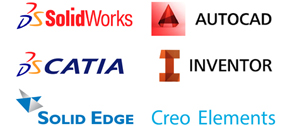Look around. Many of the gadgets you see drew inspiration from the original Mac computer.
Computers in the 1980s typically required people to type in commands. Once the Mac came out 30 years ago last Friday, people could navigate with a graphical user interface. Options were organized into menus. People clicked icons to run programs and dragged and dropped files to move them.
The Mac introduced real-world metaphors such as using a trash can to delete files. It brought us fonts and other tools once limited to professional printers. Most important, it made computing and publishing easy enough for everyday people to learn and use.
Apple sparked a revolution in computing with the Mac. In turn, that sparked a revolution in publishing as people began creating fancy newsletters, brochures and other publications from their desktops.
Those concepts are so fundamental today that it’s hard to imagine a time when they existed only in research labs — primarily Xerox’s Palo Alto Research Center. Apple Inc. co-founder Steve Jobs and his team got much of their inspiration from the center, which they visited while designing the Mac.
The Mac has had “incredible influence on pretty much everybody’s lives all over the world since computers are now so ubiquitous,” said Brad Myers, a professor at Carnegie Mellon University’s Human-Computer Interaction Institute. “Pretty much all consumer electronics are adopting all of the same kinds of interactions.”
Not the first
Apple didn’t invent these tools, nor was the Mac the first to use them. Xerox Corp. sold its own mouse-based Star computer, and Apple’s Lisa beat the Mac by months. It’s impossible to say what would have happened if those machines hadn’t flopped with consumers or whether others would have come along if the Mac hadn’t.
But the Mac prevailed and influenced generations of gadgets that followed.
The Mac owes much of its success to the way Apple engineers adapted those pioneering concepts. For instance, Xerox used a three-button mouse in its Alto prototype computer. Apple settled on one button, allowing people to keep their eyes on the screen without worrying about which button to press.
While Lisa had those improvements first, it cost about $10,000. The Mac was a “low” $2,495 when it came out on Jan. 24, 1984.
Apple insisted on uniformity, so copying and pasting text and deleting files would work the same way from one application to another. That reduced the time it would take to learn a program.
And Apple put a premium on design. Early Macs showed a happy face when they started up. Icons and windows had rounded corners. Such details made computers appear friendlier and easier to use, at least subconsciously, Myers said.
One of the first applications enabled by the Mac’s interface was desktop publishing.
Pixel revolution
Early computers generated text the way a typewriter would — character by character, one line at a time. Users had a limited number of characters, with no variation in appearance. The Mac was one of the first to approach displays like a TV: Text gets incorporated into a graphic that the computer projects on the screen pixel by pixel.
With those tools, would-be publishers could change fonts, adjust type sizes and add attributes such as italics. They could also mix images with text. The earliest Macs popularized “what you see is what you get,” or WYSIWYG; formatting on the screen closely reflected how the page would look in print. Instead of going to a professional printer, anyone could simply design and print newsletters on a Mac.
Of course, the Mac’s success was never guaranteed.
Initially, many people “thought it was a waste of time and a gimmick,” said Dag Spicer, senior curator of the Computer History Museum in Silicon Valley.
Longtime computer users already knew how to perform computing tasks “very efficiently with just two or three keystrokes,” he said. “It might have been more efficient for them than to use a mouse.”
The Mac didn’t run software for the company’s Apple II computer, so there was little people could do with it until Aldus — now part of Adobe — released PageMaker publishing software in 1985. The original Mac had little memory and a small screen, and it lacked a hard drive. Although the Mac’s processor was fast for its time, much of that power went to the graphical interface instead of tasks common for research and commerce.
With the Mac came “the dawn of the notion of we can waste computing power to make it easier for people,” said Jim Morris, who worked on the Xerox Alto before joining Carnegie Mellon by the time the Mac came out. “The Macintosh was not a business machine.”
Tim Bajarin, a Creative Strategies analyst who has followed Apple for more than three decades, says he was baffled yet intrigued when he saw the Mac unveiled at an Apple shareholders meeting in 1984.
“This really was a complete departure from the computing that we knew,” he said. “None of us had any clue what its potential would be.”
Lukewarm sales
In fact, despite its radical interface, sales were lukewarm. For years, it was mostly a niche product for publishers, educators and graphics artists. Corporate users stuck with IBM Corp. and its various clones, especially as Microsoft’s Windows operating system grew to look like Mac’s software. (There were years of lawsuits, capped by a settlement.)
Now the world’s most valuable company, Apple nearly died in the 1990s as its market share dwindled. After a 12-year exile from Apple, Jobs returned in 1997 to rescue and head the company. A year later, he introduced the iMac, a desktop computer with shapes and colors that departed from beige Windows boxes of the time.
Then came the iPod music player in 2001, the iPhone in 2007 and the iPad tablet in 2010. They weren’t Macs, but they shared the Mac’s knack for ease of use. Elements such as tapping on icons to open apps have roots in the Mac. The popularity of these devices drove many Windows users to buy Macs.
In recent years, PCs have declined as consumers turn to mobile devices. Apple sold 16 million Macs in the fiscal year ending Sept. 28, down 10 percent from a year earlier. By contrast, iPhone sales grew 20 percent to 150 million and iPads by 22 percent to 71 million.
The Mac has aged to the point that it’s starting to draw inspiration from iPhones and iPads. Several Mac apps have been refined to look and work more like mobile versions. Macs now have notifications and other features born on mobile devices. Windows computers, meanwhile, now emphasize tablets’ touch-base interfaces.
Yet without the Mac, we might never have had the iPhone or the iPad, and phones might do little more than make calls and send email.
Anick Jesdanun,
The Associated Press
Mac innovations at a glance
From the start, Apple’s Macintosh shattered conventional notions of what a computer should be.
The first Mac had a 3.5-inch floppy disk drive at a time when a 5.25 inches was the standard. The Mac used the smaller drive for practical reasons; the larger floppies weren’t reliable. But it paved the way for computers to get even smaller.
Over the next three decades, Apple would release other notable Macs:
BREAKING THE PC MOLD: Do computers have to look boring? Not according to the late Steve Jobs, who returned from exile to lead the company in 1997. In 1998, Apple came out with its first iMac. PCs at the time were typically housed in uniform beige boxes. The first iMacs looked more like TVs and came in a variety of colors over the years. At one point, Jobs even teased consumers to collect all five.
WORK OF ART: The Power Mac G4 Cube in 2000 was praised for its design, even though it didn’t sell well. The entire computer fit into a cube measuring 7 inches on each side. A crystal-clear casing made the Cube slightly larger, but it also made the device memorable. It’s now in the collection of the Museum of Modern Art in New York.
NOTHING BUT AIR: In 2008, Apple started selling the MacBook Air, notable for being thin and light. Apple pulled this off by eliminating the CD drive and the wired Ethernet port, figuring that people could download files from the Internet over Wi-Fi. Later Airs and MacBook Pros would ditch the traditional spinning hard drive in favor of solid-state memory, the kind used in phones and tablets.
FROM KBs to GBs: Last month marked the debut of Apple’s newest Mac. Aimed at professionals, the Mac Pro has more computer power than most consumers would need squeezed into a black, cylinder-shaped case that is about one-eighth the volume of the previous boxy model. The original Mac had 128 kilobytes of memory. The Pro starts at 12 gigabytes, or more than 90,000 times as much.
Anick Jesdanun
via apple - Google News http://ift.tt/KWw2sO













0 comments:
Post a Comment